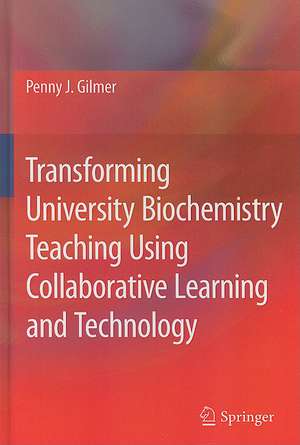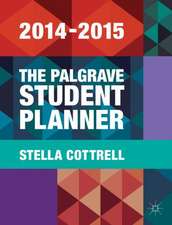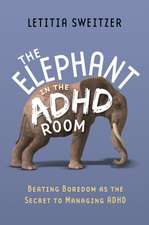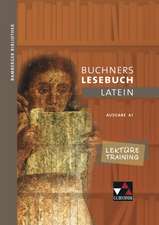Transforming University Biochemistry Teaching Using Collaborative Learning and Technology: Ready, Set, Action Research!
Autor Penny J. Gilmeren Limba Engleză Hardback – 8 apr 2010
The tools Gilmer employs as she hones her teaching skills include collaborative learning and technology. She views the classroom through various theoretical perspectives: social constructivism, cultural-historical activity theory, and a theory that involves the dialectic between the structure of the learning environment and the agency of the learners (a group among whom she includes herself). She provides a wealth of autobiographical detail as well as the results of her action research, which followed up on its original subjects after an interval of 11 years, to see what impact her course had on their professional growth. Above all, this volume is proof of what can be achieved in education when teachers are as interested in the process of learning as they are in their subject itself.
| Toate formatele și edițiile | Preț | Express |
|---|---|---|
| Paperback (1) | 637.13 lei 6-8 săpt. | |
| SPRINGER NETHERLANDS – 31 aug 2014 | 637.13 lei 6-8 săpt. | |
| Hardback (1) | 641.71 lei 6-8 săpt. | |
| SPRINGER NETHERLANDS – 8 apr 2010 | 641.71 lei 6-8 săpt. |
Preț: 641.71 lei
Preț vechi: 754.95 lei
-15% Nou
Puncte Express: 963
Preț estimativ în valută:
122.81€ • 126.87$ • 102.21£
122.81€ • 126.87$ • 102.21£
Carte tipărită la comandă
Livrare economică 25 martie-08 aprilie
Preluare comenzi: 021 569.72.76
Specificații
ISBN-13: 9781402049804
ISBN-10: 1402049803
Pagini: 224
Ilustrații: XV, 208 p.
Dimensiuni: 155 x 235 x 19 mm
Greutate: 0.45 kg
Ediția:2010
Editura: SPRINGER NETHERLANDS
Colecția Springer
Locul publicării:Dordrecht, Netherlands
ISBN-10: 1402049803
Pagini: 224
Ilustrații: XV, 208 p.
Dimensiuni: 155 x 235 x 19 mm
Greutate: 0.45 kg
Ediția:2010
Editura: SPRINGER NETHERLANDS
Colecția Springer
Locul publicării:Dordrecht, Netherlands
Public țintă
ResearchCuprins
Introducing the Study.- Researching Science Teaching and Learning.- Developing a Research Practice.- Writing a Story About Teaching University Science.- Students Collaborating in the Classroom.- Students Using Technology in the Classroom.- Addressing the Problematic Issues of Bringing Reform in Science Teaching to Higher Education: Metaloguing with a Biochemistry Colleague.- Reflecting on My Learning Through Action Research.
Textul de pe ultima copertă
One aim of Gilmer’s captivating text on university pedagogy is to show that biochemistry (or any science) does not consist solely of facts to be learned, but is a way of thinking about the world. Her purpose, both in this book and in her classroom, is to make her students into critical thinkers rather than passive learners. The chapters cast a critical eye over research into enhanced education techniques such as collaborative learning. Gilmer describes the action research she conducted in her own biochemistry undergraduate classroom into ways of improving the learning environment. She offers various perspectives on the make-up of her classroom, including an analysis of ethnographic data.
The tools Gilmer employs as she hones her teaching skills include collaborative learning and technology. She views the classroom through various theoretical perspectives: social constructivism, cultural-historical activity theory, and a theory that involves the dialectic between the structure of the learning environment and the agency of the learners (a group among whom she includes herself). She provides a wealth of autobiographical detail as well as the results of her action research, which followed up on its original subjects after an interval of 11 years, to see what impact her course had on their professional growth. Above all, this volume is proof of what can be achieved in education when teachers are as interested in the process of learning as they are in their subject itself.
The tools Gilmer employs as she hones her teaching skills include collaborative learning and technology. She views the classroom through various theoretical perspectives: social constructivism, cultural-historical activity theory, and a theory that involves the dialectic between the structure of the learning environment and the agency of the learners (a group among whom she includes herself). She provides a wealth of autobiographical detail as well as the results of her action research, which followed up on its original subjects after an interval of 11 years, to see what impact her course had on their professional growth. Above all, this volume is proof of what can be achieved in education when teachers are as interested in the process of learning as they are in their subject itself.
Caracteristici
Autoethnography of the author's own science classroom Applying a sociocultural lens on college science teaching Including a metalogue with a biochemistry colleague Includes supplementary material: sn.pub/extras


















